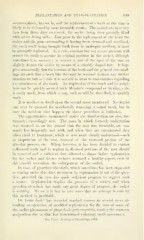Page 651 - My FlipBook
P. 651
REPLANTATION AND TEANSPLANTATJON. 649-
metamorphosis, has set in, and the replacement of a tooth at this time i&
likely to be followed hy more favorable results. This period sets in at any
time from three days to a week, the socket being then partially tilled
with active living cells. Just prior to the replacement of the tooth the
socket and the gum surrounding it having been cleansed and sterilized,
the tooth itself being brought forth from its antiseptic medium, it must
be promptly replanted. As a rule, constant but not severe pressure will
permit the tooth to assume its original position in the socket, although
sometimes it is necessary to remove a part of the apex of the root or
slightly deepen the socket by means of a suitably shaped bur. It hap-
pens occasionally that the location of the tooth and the general surround-
ings are such that a tooth like this may be retained without any further
attachment, but as a rule it is not safe to trust to uncertainties regarding
the attachment of the tooth. An impression of the tooth and its neigh-
bors can be quickly secured with ^Nlelotte's compound or in clay, a die
is easily made, from which a cap, such as will be described, is quickly
made.
It is needless to dwell upon the second cause mentioned. Xo dentist
can ever be excused for accidentally removing a sound tooth, but in
case the accident does happen the above procedure is indicated.
The opportunities enumerated under the third section are also, for-
tunately, exceedingly rare. The cases in which formerly replantation
was resorted to, on the ground that the case was incurable, are now"
much less frequently met with, and w^hen they are encountered they
often yield to treatment, which is now more clearly understood—such
as amputation of the root, removal of the necrosed portion of the
alveolar process, etc. AVhen, ho\\ever, it has been decided to extract
a diseased tooth and to replant it, diseased portions of the root should
be removed and a sufficient time allowed to elapse before replantation
f(tr the socket and tissues to have assumed a healthy aspect, even if
this should necessitate the enlargement of the socket.
In cases of pyorrhea alveolaris, which sometimes has been suggested
as coming under this class, treatment by replantation is out of the ques-
tion, provided the case has made sufficient progress to suggest such
a course. Replantation implies the presence of a socket, and when
pyorrhea alveolaris has made any great degree of progress, the socket
is wanting. Hence it is l)ut in rare cases that an attempt to cure by
this method is justifiable.
Dr. Louis Jack ' has recorded marked success in several cases at-
tending an operation of modified replantation for the cure of some of
the earlier phenomena of phagedenic pericementitis, notably the common
malposition due to what has been termed voluntary tooth movement.
^ See Trails. Academy of StDinafolor/y, 1895.


